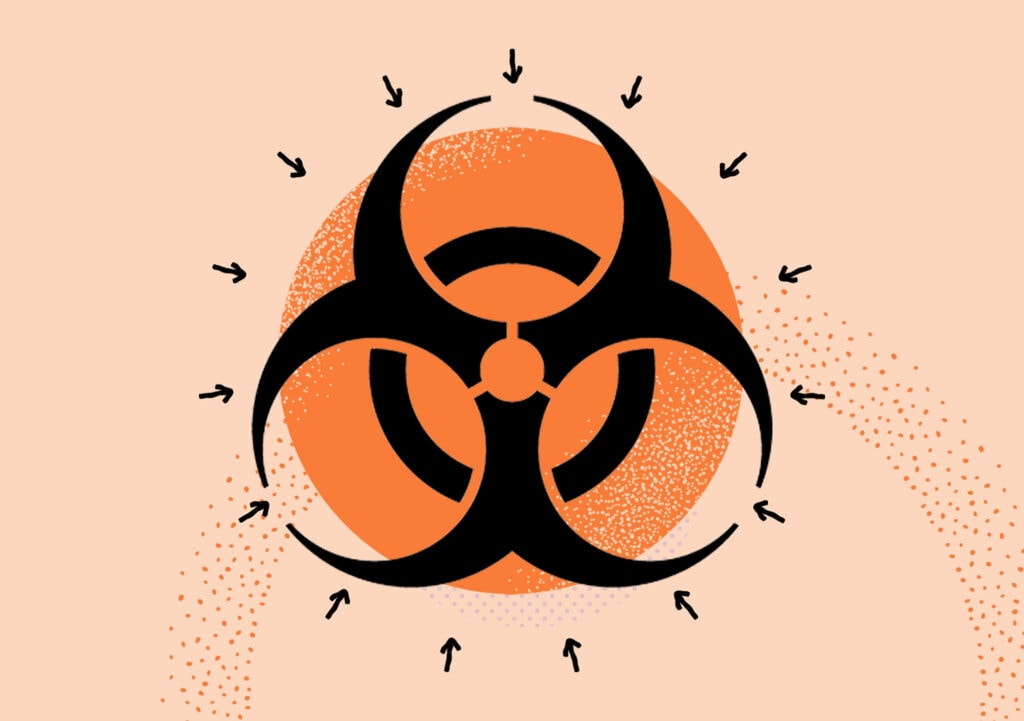Researchers from the Northern University of British Columbia describe a toxic workplace as such: “An organization can be considered toxic if it is ineffective as well as destructive to its employees”.
Not only does research show that “toxic workplace culture is 10.4 times more likely to contribute to an employee quitting”, but a toxic workplace also contributes to poorer employee mental health “such as 36.7% more anxiety, 32.5% more panic attacks and 27% more depression”.
It’s important to know how to spot a toxic workplace so that you can fix or avoid any toxicity within your own organization.
One of the telltale signs of a toxic workplace is high turnover.
If your workplace is consistently struggling to retain employees, it’s likely there’s more going on than just the usual resignations and retirements. High turnover can be industry-specific, but generally if employees are leaving faster than you can fill their positions and train replacements—leaving a number of vacancies across your organization—you have a high turnover.
When turnover is high in an organization, it creates increasing challenges for the employees who do stay with your company. These employees are likely picking up the slack, working longer hours, taking on more than their role entails, and feeling overall burned out—all of which can contribute to a toxic work environment.
Turnover is a cyclical problem, where the employees left “behind” will end up leaving and so on. If left unchecked, you’re going to find yourself dealing with high turnover… over and over.
The same factors that contribute to high turnover can also show you how to spot a toxic workplace.
High turnover is generally caused by a combination of three factors: lack of communication, lack of support, and poor company culture. These three factors can all translate to a variety of different things. Lack of communication can mean that there are communication breakdowns between executives and those reporting to them, or silos between teams, or no transparency around salary, or that policies aren’t shared across the organization. A lack of support can mean that employees feel like their managers are quick to blame them for mistakes and slow to celebrate their achievements. Poor company culture can look like an organization not sharing or not having an overall vision and goals that employees are able to align themselves and their work with.
Of course, the markers of a toxic workplace vary from industry to industry. Things that certain professions might find standard and tolerable may be considered absolutely unacceptable in another industry. For example, long hours, working doubles, and dealing with often challenging and difficult circumstances are quite standard in healthcare, but would be potentially toxic in an industry such as banking. What’s defined as toxic should be evaluated on an industry level.
A toxic workplace isn’t a death sentence. There’s plenty your organization can do to ‘suck the poison out’.
Now that you know how to spot a toxic workplace, here are some of the steps you can take to improve your workplace culture:
- Complete an engagement survey to evaluate any sticking points within your organization. This will give you a baseline for overall employee satisfaction. You can repeat the survey once you’ve implemented some changes to track how employee sentiment improved.
- Analyze employee feedback. Sort the feedback from your engagement survey into different buckets, such as salary, engagement, recognition, values, etc.
- Figure out steps you can take to improve issues. For example, if employee feedback shows they feel they aren’t able to align with company values, plan to create more material that presents the values and is accessible to employees, and also figure out how you can incorporate your corporate values in your workplace in actionable ways.
- And repeat. Complete another engagement survey to gauge how things have changed and repeat the cycle to eliminate toxic habits from the workplace.



